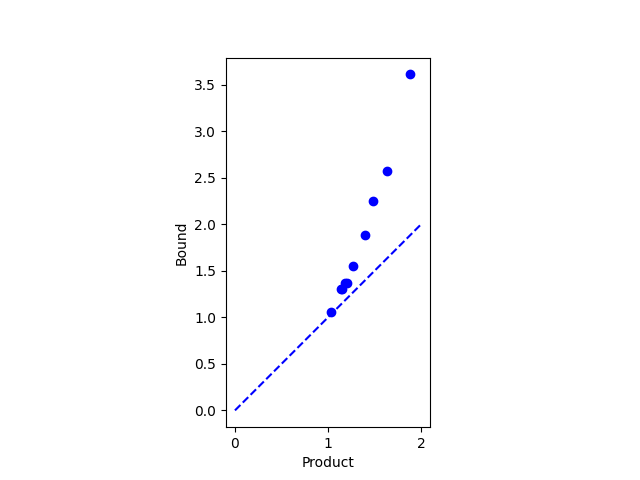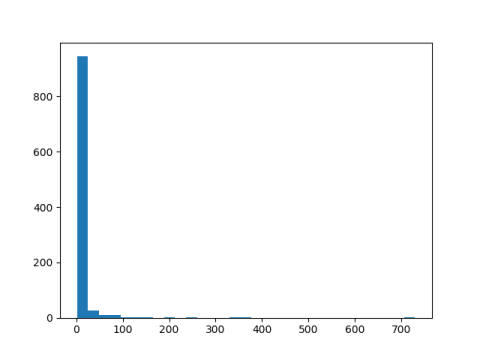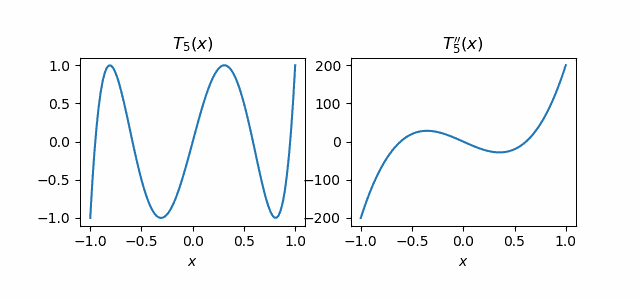This post will state a couple forms of the Cauchy-Schwarz inequality and then present the lesser-known reverse of the Cauchy-Schwarz inequality due to Pólya and Szegö.
Cauchy-Schwarz inequality
The summation form of the Cauchy-Schwarz inequality says that

for sequences of real numbers xn and yn.
The integral form of the Cauchy-Schwarz inequality says that

for any two real-valued functions f and g over a measure space (E, μ) provided the integrals above are defined.
You can derive the sum form from the integral form by letting your measure space be the integers with counting measure. You can derive the integral form by applying the sum form to the integrals of simple functions and taking limits.
Flipping Cauchy-Schwarz
The Cauchy-Schwarz inequality is well known [1]. There are reversed versions of the Cauchy-Schwarz inequality that not as well known. The most basic such reversed inequality was proved by Pólya and Szegö in 1925 and many variations on the theme have been proved ever sense.
Pólya and Szegö’s inequality says

for some constant C provided f and g are bounded above and below. The constant C does not depend on the functions per se but on their upper and lower bounds. Specifically, assume

Then

where

Sometimes you’ll see C written in the equivalent form

This way of writing C makes it clear that the constant only depends on m and M via their ratio.
Note that if f and g are constant, then the inequality is exact. So the constant C is best possible without further assumptions.
The corresponding sum form follows immediately by using counting measure on the integers. Or in more elementary terms, by integrating step functions that have width 1.
Sum example
Let x = (2, 3, 5) and y = (9, 8, 7).
The sum of the squares in x is 38 and the sum of the squares in y is 194. The inner product of x and y is 18+24+35 = 77.
The product of the lower bounds on x and y is m = 14. The product of the upper bounds is M = 45. The constant C = 59²/(4×14×45) = 1.38.
The left side of the Pólya and Szegö inequality is 38×194 = 7372. The right side is 1.38×77²= 8182.02, and so the inequality holds.
Integral example
Let f(x) = 3 + cos(x) and let g(x) = 2 + sin(x). Let E be the interval [0, 2π].
The following Mathematica code shows that the left side of the Pólya and Szegö inequality is 171π² and the right side is 294 π².
The function f is bound below by 2 and above by 4. The function g is bound below by 1 and above by 3. So m = 2 and M = 12.
In[1]:= f[x_] := 3 + Cos[x]
In[2]:= g[x_] := 2 + Sin[x]
In[3]:= Integrate[f[x]^2, {x, 0, 2 Pi}] Integrate[g[x]^2, {x, 0, 2 Pi}]
Out[3]= 171 π²
In[4]:= {m, M} = {2, 12};
In[5]:= c = (m + M)^2/(4 m M);
In[6]:= c Integrate[f[x] g[x], {x, 0, 2 Pi}]^2
Out[6]= 294 π²
Related posts
[1] The classic book on inequalities by Hardy, Littlewood, and Pólya mentions the Pólya-Szegö inequality on page 62, under “Miscellaneous theorems and examples.” Maybe Pólya was being inappropriately humble, but it’s odd that his inequality isn’t more prominent in his book.




